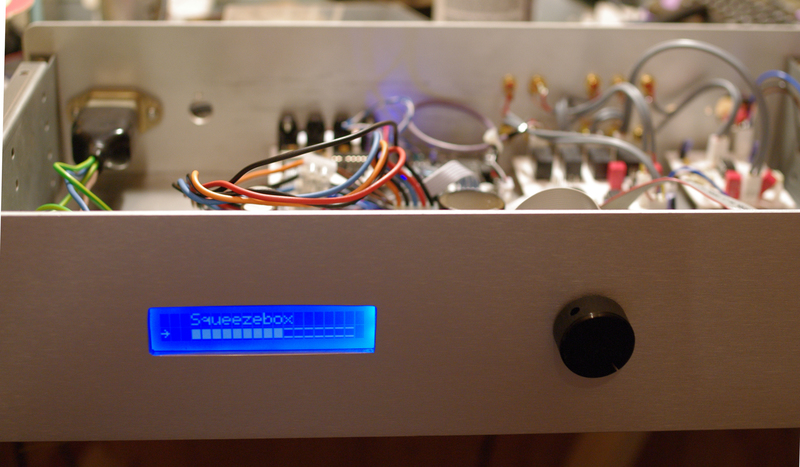One of my hobbies is building audio gear and generally messing around with Hi-Fi systems. The resulting mass of wires in the living room is, understandably, sometimes in conflict with my Wife’s desire to “just listen to some music”…
Something had to be done to provide a consistent and simple user interface to my Hi-Fi system whilst accommodating my habit of tinkering with it from time to time.
I decided to build a preamp / switch box that would provide a simple “one knob” user interface, yet hide whether the sound was coming from an analogue or digital source, and so on.
The front panel consists of a nice Bourns rotary encoder and a 20×2 character blue backlit LCD display, all interfaced to an Atmel AVR microcontroller.
I wanted to make the rest of the system relatively modular, the idea being that, as I upgrade and tweak other parts of the system, I can swap them out without upsetting the usability of the system as a whole. Currently, I have the following components in the system:
- Power Supply
- Phono stage
- SPDIF receiver and input selector
- SPDIF decoder and DAC
- Analogue input selector, buffer and volume control
Power Supply
Currently, this consists of a pair of small toroidal transformers, one supplying a +5V “digital” rail via a rectifier, reservoir capacitor and 3 terminal IC regulator, and the other proviging +/-15V “analogue” rails using a similar scheme. One day, I have it in mind to replace these with something better but, for now, they do the job.
Phono Stage
This is currently a single Op-Amp stage with RIAA equalisation that is fed from a Benz Micro Ace cartridge via a 6:1 step-up transformer.

